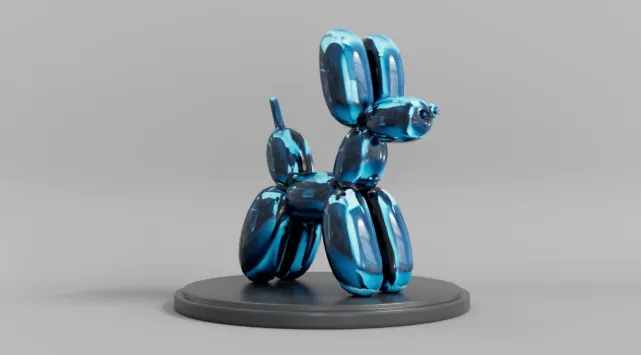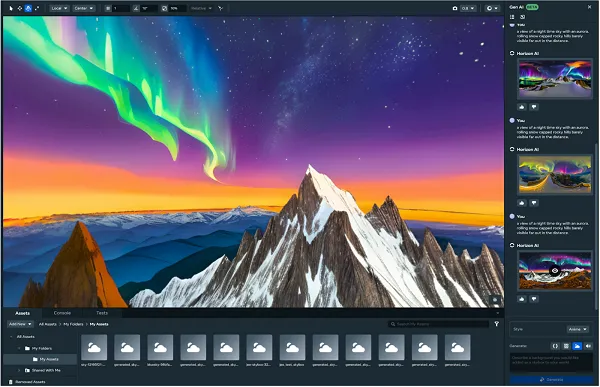Meta has outlined the next element of its evolving VR asset generation model, which will enable any VR user to create a fully immersive environment, by simply speaking things into existence.
Called AssetGen, Meta’s latest system enables VR users to create complex 3D objects from text and image prompts.

As you can see in this example, AssetGen is an advance in 3D world generation, by enabling users to build out their experiences with complex, high-quality 3D items.
As explained by Meta:
“Building on its predecessor, AssetGen 1.0, our latest innovation represents a significant leap forward in 3D generative AI research, leveraging a single-stage 3D diffusion model to deliver 3D meshes with dramatically improved detail and fidelity, while our complementary TextureGen model ensures that these assets are not only visually stunning but also production-ready with high-quality textures.”
Meta says that AssetGen 2.0 uses 3D diffusion for geometry estimation, and is trained on a large corpus of 3D assets.
“For texture generation, it also introduces new methods for improved view consistency, texture in-painting, and increased texture resolution. We’re currently using AssetGen 2.0 internally for 3D worlds creation, and we will roll out later this year to Horizon creators.”
That, effectively, will democratize VR creation, enabling anyone to create entire, immersive VR experiences, by simply speaking them into existence.
Meta’s been developing simplified 3D creation tools over the past few years, showcasing its initial VR “BuilderBot” back in 2022.
AssetGen is part of the next iteration of this, with Meta showcasing its expanding VR creative capacity last month, which already enables the creation of full VR worlds through text and spoken prompts.

With this, anyone can effectively create their own VR environment within hours, without the need for coding knowledge or in-depth understanding of VR systems.
That, as noted, is the next stage of Meta’s VR evolution, and the gateway into its broader metaverse experience.
Which, logically, remains the most likely next advance for connective technology, though there are still several hurdles that will impede that next stage, which could be difficult to overcome.
For one, Meta needs to facilitate widespread adoption of VR, and VR headsets aren’t cheap. Meta has said that it’s willing to take a hit on this, eating some of the cost of unit sales in order to boost Quest take-up. But even then, the current slate of VR experiences is probably not enough to drive widespread adoption as yet.
Though take-up is steadily increasing.
Meta is selling more Quest headsets over time, but again, it’s not close to being a “must-have” tech item as yet.
Which is why Meta’s shifted its focus to AR glasses instead, which can now facilitate the use of AI prompts at any time. And with AI being the tech trend of the moment, that’s helping to boost sales of Meta’s Ray Bans, which it sees as a stepping stone into its full VR experience.
And when you also consider the adoption of online gaming worlds as a key connective platforms for millions of youngsters, that’s another reason to believe that this approach is the next logical progression, though there is one other significant issue that Meta still needs to resolve: Motion sickness in VR environments.
If you use immersive VR for more than 30 minutes, your body’s going to be forced to adjust to a mix of unnatural responses, based on the inputs that you’re experiencing. That, for some people, will lead to motion sickness, with around a quarter of all VR users feeling a little green due to the shift.
Personally, I felt immediately sick in a rollercoaster VR sim, while a space environment was also disorienting. I mean, I get sick on actual rollercoasters, and there is some evidence to suggest that older users are more likely to feel such impacts. As such, I may not be the best example, but there is a real concern about VR sickness, and how that can be overcome to facilitate broader adoption and use.
Because while being able to experience immersive environments is one thing, getting your body to come along for the ride is another, and Meta still has some challenges before it in this respect.
Maybe that’s just part of the broader evolution, of human evolution more broadly, and the next generation will be more attuned to such, as they engage in VR from younger ages.
But basically, Meta’s still got a way to go to make its VR metaverse a thing. Which is why it probably went too early with the public name change to Meta (though it has had other brand association benefits), which has prompted many to suggest that its metaverse dream is a failure.
It’s not, it’s just not here quite yet. But advances like this are another significant step towards facilitating engaging, enriching VR experiences.













